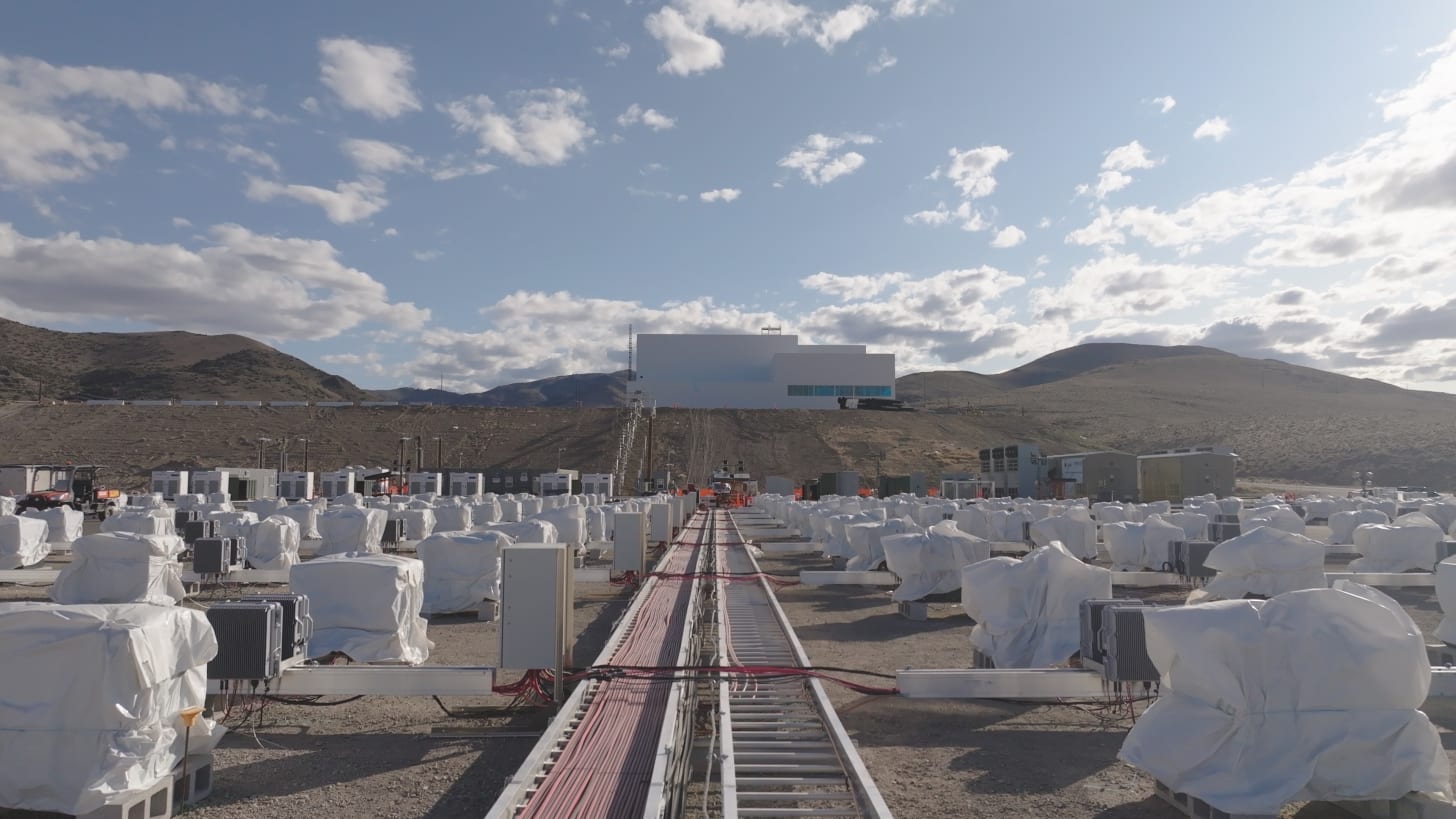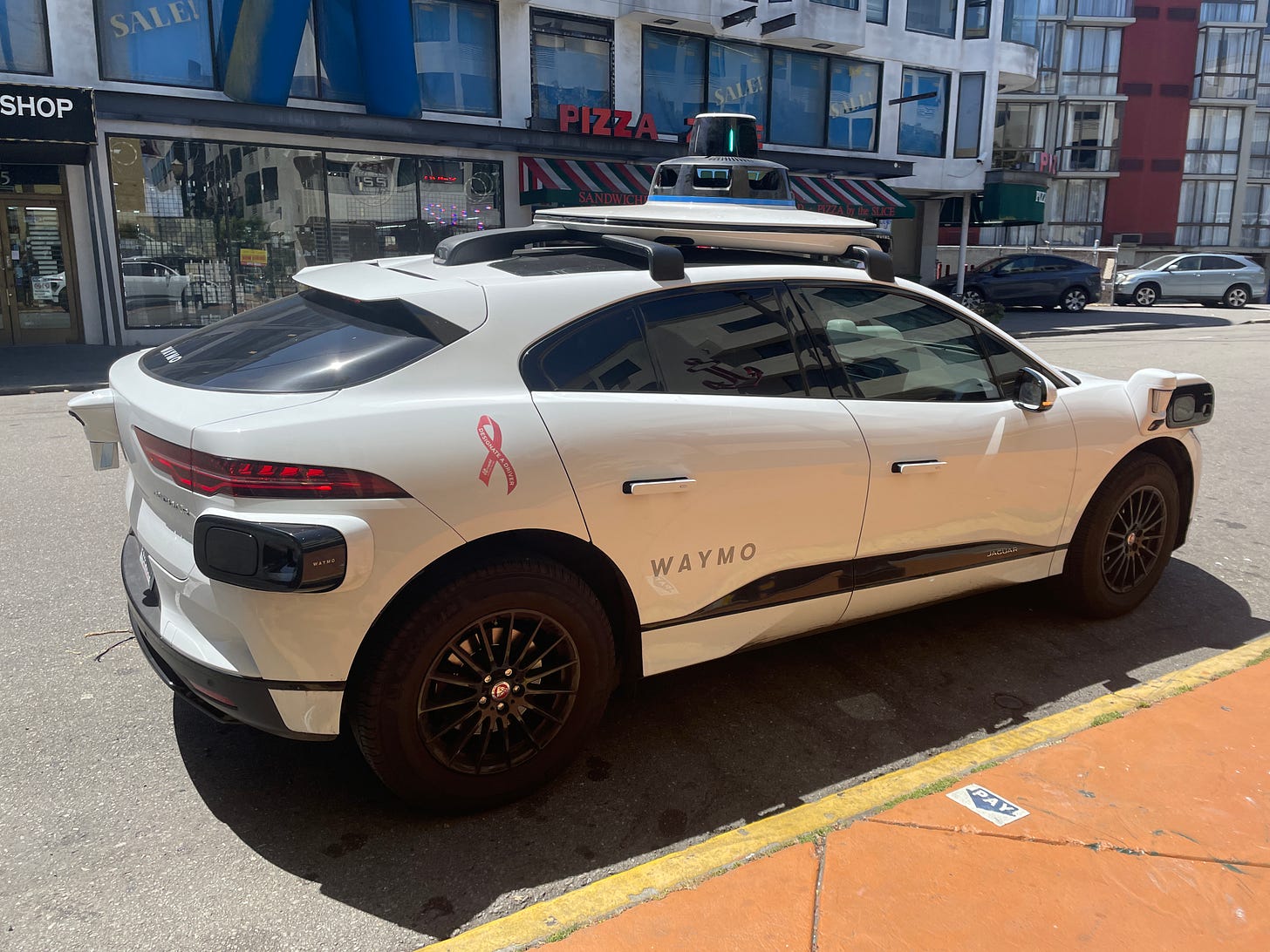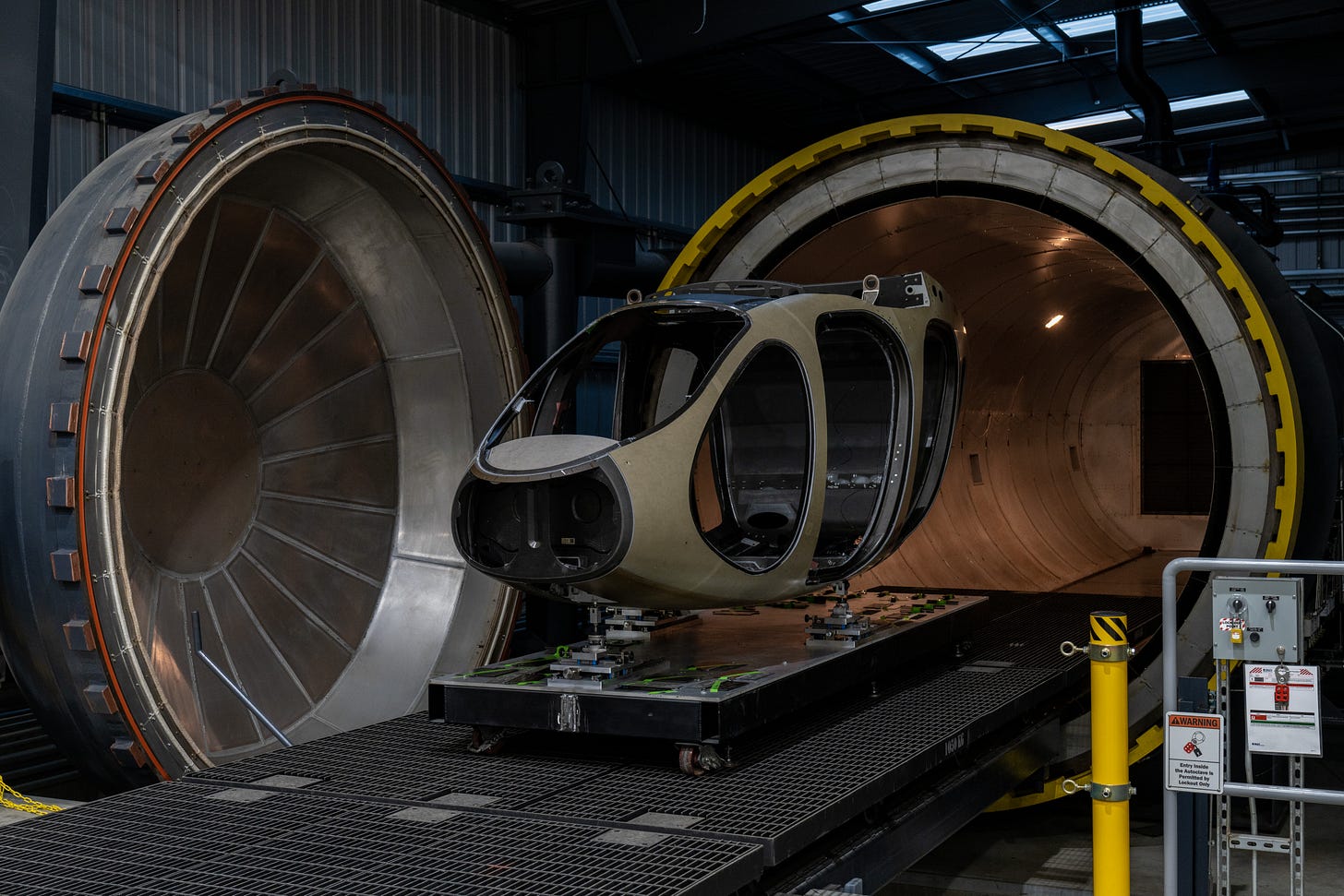From used to useful: Redwood Materials finds a new purpose for EV batteries
General Motors and Redwood Materials explore energy storage. Backed by Toyota knowhow, Joby Aviation has bold new manufacturing plans. The robotaxi business may be a dud.
Hello everybody,
Welcome back to Velocity. Hope you enjoyed last week’s debut. We’ve got plenty ahead today.
Redwood Materials forging ahead with its new energy-storage business, and is in the final stages of forging a new agreement with General Motors.
Joby Aviation detailed more expansive plans for manufacturing its e-VTOL aircraft in Marina, California and Dayton, Ohio, a mission that’s girded by Toyota’s manufacturing playbook.
Robotaxis are proliferating. But their business prospects remain glum, according to a new report from HSBC global research analysts.
We start with boots on the ground in Sparks, Nevada, once a gold-mining hotspot. That’s where I spent some time in recent weeks, learning about Redwood Materials’ efforts to pluck EV batteries from the trash heap and repurpose them in energy storage systems.
You’ve heard the saying “One man’s trash is another man’s treasure.” Tesla co-founder JB Straubel is personifying that adage.
Straubel, Redwood’s CEO, has rescued 792 battery packs and re-used them alongside the company’s offices in Sparks in what’s believed to be the America’s largest microgrid.
Those batteries are fed energy from an adjacent solar array, and they provide 12 megawatts and 63 megawatt-hours of electricity to an onsite AI data that’s owned by AI infrastructure provider Crusoe.
This is small scale compared to what’s ahead.
Redwood, which started a energy-storage business unit called Redwood Energy in June, has collected warehouses filled with used lithium-ion batteries. The company already has about 1 GWh of capacity from used EV batteries in hand, and Straubel said that will increase to 5 GWh by the end of this year.
There’s a new update on how Redwood intends to get there. General Motors said today it will provide second-life EV battery packs to Redwood. In addition to that, GM will provide new batteries manufactured specifically for energy-storage pursuits.
“Backup power isn’t just expanding, it’s becoming essential infrastructure,” said Kurt Kelty, GM’s vice president of batteries, propulsion and sustainability, who worked closely with Straubel years ago at Tesla.
While the idea utilizing second-life batteries in energy-storage systems that backstop rickety electric grids has intrigued utility providers, car manufacturers and energy experts for years, the economics behind such endeavors have been unclear.
Redwood believes the time is right, especially with AI data centers in Sparks and beyond clamoring for electricity. Cal Lankton, the company’s chief commercial officer, detailed the business prospects of second-life energy storage with me on this week’s Shift podcast.
Bottom line: The U.S. Department of Energy estimates that AI data centers might constitute as much as 12 percent of all U.S. electricity demand by 2028, tripling their consumption from today’s levels. Utility and energy providers cannot develop infrastructure fast enough to accommodate demand.
Energy storage could play an essential role in bridging that gap. Old junk, transformed into Sparks’ new treasure.
Robotaxis meet reality
Self-driving technology has come a long way. Self-driving business models? They’re stuck in neutral.
That’s the enthusiasm-dousing assessment from global banking firm HSBC, which estimates in a new report that robotaxis will not break even on a cash-flow basis until 7 to 8 years after they launch.
Despite offering 250,000 driverless rides per week, Waymo nonetheless lost $4.4 billion last year, according to the firm. That’s a wider than its $4 billion loss in 2023, when it offered fewer rides. The numbers suggest scaling across multiple cities may bring greater expenses rather than a widening profit margin.
Even if companies like Waymo and Baidu land on a business model that works, HSBC believes that total addressable market claims are “widely over-estimated” and “vary from the ambitious to the unrealistic.”
Robotaxis are ultimately competing with personally owned vehicles for consumer dollars, HSBC said, and it sees the incumbent remaining ahead.
“Consumers would need to abandon vehicle ownership for the (robotaxi) market to reach the scale some pundits are predicting,” the research report said. “We don’t see this as likely.”
A small counterpoint: Affordability of personally owned vehicles has emerged as a trouble spot. The average new vehicle transaction price was $48,907 in June, according to Cox Automotive.
Nearly 20 percent of car loans financed in the second quarter of 2025 exceeded $1,000 per month, new data from Edmunds.com shows. More than 22 percent of buyers opted for 84-month loans.
Maybe I’m just getting old, but those numbers leave me aghast. I could never choke them down. And they don’t include energy costs, maintenance or insurance. At some point, consumers may search for other transportation options. For those who live within their service areas, robotaxis might be viable alternatives.
What do you think?
Join us at Automotive News Congress
I’m excited to share that General Motors CEO and chair Mary Barra and Hyundai Motor Group executive chair Euisun Chung are scheduled to deliver keynotes at Automotive News Congress on September 11.
Need another reason to attend? I’ll be moderating a panel on China’s emergence as the preeminent global automotive leader. I’ll be joined on stage by Sino Auto Insights’ founder
and Dunne Insights founder and CEO .You can register and find the complete list of speakers here. I hope we’ll see you, as the song from The Happenings goes, in September.
How ‘Kaizen’ takes flight
A few years ago, I toured Joby Aviation’s e-VTOL production facility in Marina, California. I came away impressed by the company’s efforts to vertically integrate its supply chain, in some cases 3-D printing parts on site, and intrigued with the imprint of Toyota’s “Kaizen” philosophy of continuous improvement seemingly in every nook and cranny of the factory.
The companies doubled down this week.
Joby said it would double its aircraft production capacity in Marina, and expect to expand to a point where they could produce approximately 24 aircraft per year at location that will also support maintenance, pilot training and certification functions.
In Dayton, Ohio, the company has been renovating a factory that will manufacture both aircraft and components. Eventually, Joby intends to build up to 500 aircraft per year at that factory.
The expansions are made possible by the closing of a $250 million tranche of funding in May that’s part of a larger, previously announced Toyota investment.
Toyota has offered more than money. The company’s engineers are integrated within Joby’s facilities, and working to help the burgeoning eVTOL manufacturer optimize their processes, streamline assembly plans and develop custom tooling ahead of mass production.
Joby says the expansion will add “hundreds of jobs” in Marina alone. They arrive amid a nationwide push to reinvigorate America’s industrial capacity and manufacturing might.
That’s the focus of the “Reindustrialize” conference occurring this week in Detroit, where everyone from drone operators to seaglider manufacturers are gathering to consider how to best answer – or operate within – President Trump’s fast-changing industrial policy, and his call to establish domestic manufacturing and reduce reliance on foreign supply chains.
More on those efforts next week.
Final thoughts, disturbing direction
A new report from the Governors Highway Safety Association examines a brutal trend: Pedestrian deaths are near 40-year highs on American roads.
Among their findings:
Pedestrian deaths have risen at a far faster rate than overall traffic fatalities. Pedestrian deaths rose 80 percent between 2009 and 2023, while all other fatalities increased 13 percent.
Lack of infrastructure is contributing to the increase. In 2023, nearly two-thirds of all pedestrian deaths occurred in locations without a sidewalk. Since 2017, the number of pedestrian deaths in places without a sidewalk rose by 1,162 compared to an increase of 167 in places with a sidewalk.
Motorists struck and killed 7,148 people in 2024 on U.S. roads. That’s enough to fill 31 Boeing 737s.
That’s a shameful track record. If a commercial jetliner crashed every other week, travelers would forego flying. We can do far better.






